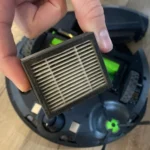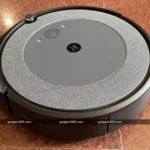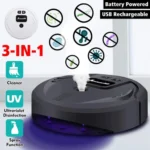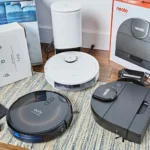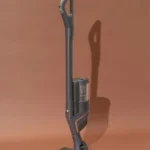Have you ever wondered what suction power really means and why it’s important for your smart vacuum cleaner? You’re not alone. Many people have a hard time understanding the intricacies of suction power and how it affects the performance of their vacuum cleaner. But fear not, because in this article, we’ll dive deep into the world of suction power and explain what it is, how it’s measured, and why it matters for keeping your home clean. So sit tight and prepare to be amazed by the power of suction.
Understanding Suction Power
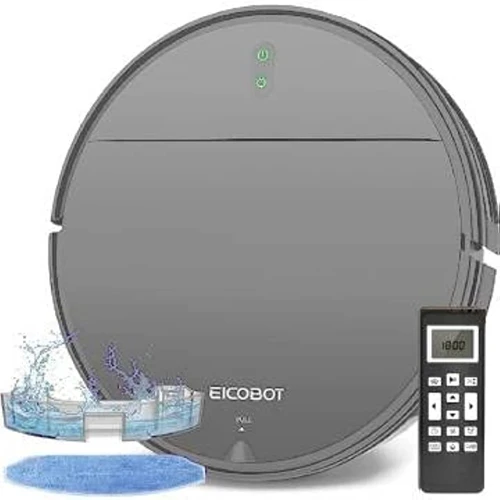
When it comes to choosing a smart vacuum cleaner for your home, one of the most crucial factors to consider is suction power. Suction power is what enables your smart vacuum cleaner to pick up dirt, debris, and pet hair from your floors and carpets. Understanding how suction power works, how it’s measured, and why it’s so important will help you make the best choice for your home cleaning needs. In this section, we will explore everything you need to know about suction power to ensure that you’re making an informed decision when purchasing a smart vacuum cleaner. So, let’s dive in!
What is Suction Power?
Suction power is the force that a vacuum cleaner uses to pick up dirt and debris from surfaces. Essentially, it is how powerful the vacuum is at pulling in air and everything that comes with it. A vacuum with strong suction power will be able to pick up more dirt and debris than a vacuum with weak suction power.
Suction power is measured in air watts (AW) or cubic feet per minute (CFM). Air watts measures the amount of power a vacuum cleaner uses to pick up dirt, while CFM measures the amount of air that is being pulled through the vacuum. Both measurements are important for determining a vacuum’s cleaning ability.
The motor is the main component that creates suction power in a vacuum cleaner. A stronger motor will generally result in more suction power, allowing the vacuum to clean more efficiently.
Other factors that can affect a vacuum’s suction power include the design of the brushroll, efficiency of the filters, and the type of cyclonic technology being used.
Different types of flooring may also require different suction power levels. For example, carpets may require more suction power due to the fibers being deeper and harder to clean, while hardwood floors may require less suction power to avoid damaging the surface.
It’s important to choose a vacuum cleaner with the right suction power for your needs. A vacuum with too little suction power may not pick up all the dirt and debris, while a vacuum with too much suction power may damage surfaces or be too difficult to maneuver.
Suction power is an essential factor when choosing a vacuum cleaner, and understanding how it works can help you make the right decision for your cleaning needs. To learn more about the other factors that affect vacuum cleaning ability, check out our article on 5 Factors That Affect Vacuum Cleaning Ability. To learn about how HEPA filters can improve your smart vacuum’s performance, read our article on HEPA Filters for Smart Vacuums. Finally, for more information on brush roll types for home flooring and how they can affect suction power, check out our article on Brush Roll Types for Home Flooring.
How is Suction Power Measured?
Measuring suction power is not as simple as you may think. There are different ways to measure the suction power, and the numbers can differ depending on which method is used. However, the most common way to measure suction power is by using air watts. Air watts measure the amount of airflow and pressure that a vacuum cleaner can produce.
Another way to measure suction power is by using the CFM (Cubic Feet per Minute) value. The CFM value measures the volume of air that a vacuum cleaner can move through its system in a minute. The higher the CFM value, the more powerful the vacuum cleaner is.
Vacuum cleaners that use water filtration often use cubic meters per hour (CMH) to measure suction power. CMH measures how much air the motor can move through a vacuum cleaner’s system, taking into account the resistance of the water in the filtration system.
It is essential to keep in mind that suction power is not the only factor that determines a vacuum cleaner’s performance. Filtration, brushroll design, and motor strength also play an essential role in a vacuum cleaner’s overall cleaning effectiveness.
If you want to learn more about how technology is improving vacuum cleaners, read our article on cyclonic technology and how it can help you get cleaner floors.
Why Does Suction Power Matter?
One may wonder, why does suction power matter so much when it comes to smart vacuum cleaners? Well, here are some reasons why:
- Better cleaning performance: Vacuum cleaners with higher suction power tend to have better cleaning performance. They can pick up dirt, dust, and debris more effectively from carpets, floors, and other surfaces. This is especially important for homes with pets, where pet hair and dander can quickly accumulate.
- Faster cleaning times: With better suction power, your smart vacuum cleaner can clean floors and surfaces faster, saving you time and effort. It will require fewer passes over the same area to get it clean, which is particularly useful if you have a busy lifestyle.
- Improved air quality: A smart vacuum with strong suction can efficiently remove allergens, such as dust mites and pollen, from your home. This results in improved air quality, which is especially important for people with allergies or respiratory issues.
- Longer lasting results: With higher suction power, your smart vacuum cleaner can remove embedded dirt and debris that can cause long-term damage to floors and carpets. By preventing such damage, you’ll enjoy cleaner and fresher floors, which will last longer.
- Less maintenance: Smart vacuums with high suction power can clean better and faster, meaning you’ll spend less time maintaining them. You won’t have to empty the dustbin or clean the filters as often, which can make your life much easier.
In short, suction power plays an essential role in how well your smart vacuum cleaner can clean floors, carpets, and surfaces. By choosing the right suction power level and optimizing your smart vacuum performance, you can achieve better cleaning results, improve air quality, and reduce your maintenance needs.
Factors Affecting Suction Power
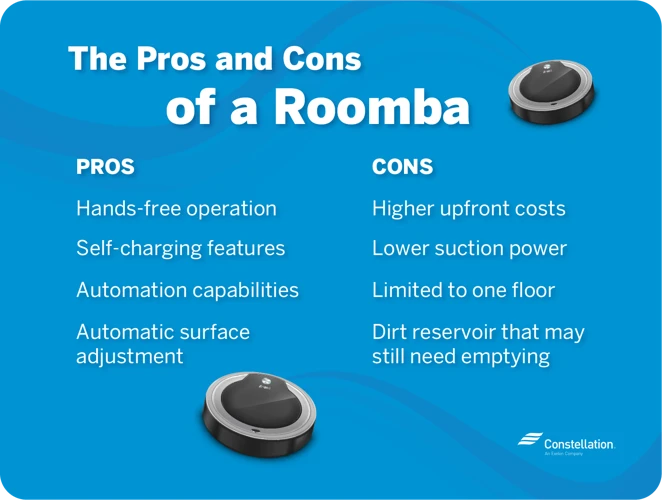
Have you ever wondered why your smart vacuum cleaner isn’t picking up as much dirt and debris as you expected? The suction power of your vacuum cleaner is a crucial factor in determining its cleaning efficiency. After all, without sufficient suction power, your vacuum cleaner won’t be able to effectively pull in dirt, dust, and debris from the floor or upholstery. Several factors can affect suction power, including filter efficiency, dustbin capacity, brushroll design, motor strength, and the hose and wand. In this section, we’ll explore each of these factors in more detail, so you can better understand what impacts your smart vacuum cleaner’s suction power.
Filter Efficiency
One of the most crucial factors affecting suction power is filter efficiency. The filters in your smart vacuum cleaner play an important role in trapping dust particles, dirt, and other debris that contributes to poor indoor air quality. Dirty or clogged filters can cause the suction power of your vacuum cleaner to drop significantly, lowering its ability to clean effectively.
To ensure optimal suction power, it’s essential to use filters with high filtration efficiency. A filter with high-efficiency particulate air (HEPA) can capture up to 99.97% of particles as small as 0.3 microns, making them an excellent choice for allergy sufferers and those with respiratory issues.
Benefits of High Filter Efficiency:
- Helps eliminate allergens, bacteria, and viruses from the indoor environment.
- Maintains suction power and prevents loss of performance over time.
- Extends the life of the vacuum cleaner’s motor and other components.
- Keeps the air in your home clean, fresh, and healthy.
It’s important to note that not all filters are washable or reusable; some will require replacement once they become too clogged with dust and debris. Always refer to the manufacturer’s instructions to determine whether the filter can be washed or if it needs replacement.
Tips for Maintaining Filter Efficiency:
- Clean or replace filters regularly to prevent loss of suction power.
- Allow filters to dry completely before reinstalling them to avoid mold growth.
- Check for damage or wear and replace as needed to maintain performance.
- Avoid using your smart vacuum cleaner with wet filters to prevent damage and reduce suction power.
By paying attention to filter efficiency, you can optimize the suction power of your smart vacuum cleaner, maintaining its performance and prolonging its lifespan.
Dustbin Capacity
The dustbin capacity is an important factor to consider when choosing a smart vacuum cleaner. It is the size of the dustbin that determines how much dirt and debris the vacuum cleaner can pick up before needing to be emptied. A larger capacity dustbin means you can clean more without interruptions, but it also means a heavier vacuum cleaner. On the other hand, a smaller dustbin capacity requires more frequent emptying but results in a lighter vacuum cleaner.
The dustbin capacity of a smart vacuum cleaner can range from as little as 0.3L to over 1L. However, the ideal dustbin capacity will depend on your cleaning needs and the size of your home. For larger homes with more floor space, it’s recommended to opt for a vacuum cleaner with a larger dustbin so you don’t have to empty it as often. Additionally, if you have pets or someone in your home with allergies, a larger dustbin capacity may be more beneficial as it can hold more pet hair and dander, reducing the need for frequent emptying.
Smaller dustbins work well for small apartments or studios, especially those with minimal floor space. They are also ideal for quick cleanups or spot-cleaning, where you may only need to vacuum a small area.
In order to make the most of your smart vacuum cleaner’s dustbin capacity and avoid having to stop cleaning frequently, it’s essential to optimize your vacuum’s suction power by keeping its other components, like filters and brushrolls, clean and in good condition. This will allow your vacuum cleaner to function optimally, picking up as much dirt and debris as possible before it needs to be emptied.
The following table summarizes the dustbin capacity of some of the best smart vacuum cleaners on the market today:
| Smart Vacuum Cleaner | Dustbin Capacity |
|———————-|——————|
| iRobot Roomba i7+ | 0.6L |
| Shark IQ Robot R101AE | 0.7L |
| Eufy RoboVac 30C Max | 0.6L |
| Samsung POWERbot R7065 | 0.3L |
| Xiaomi Mi Robot Vacuum-Mop P | 0.6L |
The dustbin capacity of your smart vacuum cleaner is an essential consideration when buying a new vacuum cleaner. To get the most out of it, you should select a dustbin capacity suitable for your cleaning needs and the size of your home. Additionally, maintaining other components of your vacuum cleaner can help optimize its suction power, allowing it to work for longer periods before needing to be emptied.
Brushroll Design
The brushroll design is an important factor in the suction power of a smart vacuum cleaner. It refers to the shape, size, and materials used in the brushroll of the vacuum cleaner. The brushroll is responsible for agitating the surface of the floor, dislodging dust and debris, and allowing the suction power to pull them into the dustbin.
The shape and size of the brushroll can affect the cleaning performance of the vacuum cleaner. A wider brushroll can cover more surface area, which is ideal for cleaning larger rooms. A smaller brushroll, on the other hand, can provide better maneuverability and is ideal for cleaning smaller spaces.
The materials used in the brushroll also play a crucial role in suction power. Brushes made of strong and durable materials such as nylon or carbon fiber can effectively remove dirt, dust, and debris from carpets or hard floors. For pet owners, the brushroll design should be able to pick up pet hair without getting tangled up in the process.
It is important to note that the brushroll needs to be cleaned regularly to maintain its efficiency. Hair and debris can get tangled around the brushroll, reducing its effectiveness in agitating the surface of the floor. A brushroll with a removable design makes cleaning easier and more convenient.
Brushroll design is an important factor to consider when choosing a smart vacuum cleaner with powerful suction. The shape, size, and materials used in the brushroll should be appropriate for the type of flooring in your home and the presence of pets. Regular cleaning and maintenance of the brushroll will ensure optimum suction power and cleaning performance.
| Pros | Cons |
|---|---|
| Wider brushroll can cover more surface area | Smaller brushroll may not be ideal for larger rooms |
| Strong and durable materials such as nylon or carbon fiber can effectively remove dirt, dust and debris from carpets or hard floors | Requires regular cleaning and maintenance to ensure optimum suction power and cleaning performance |
| Brushroll with a removable design make cleaning easier and more convenient | Brushroll made with less durable materials can wear out quickly and affect long-term suction power |
Motor Strength
The motor strength is one of the key factors in determining the suction power of a smart vacuum cleaner. A stronger motor typically means more suction power, which leads to better cleaning performance. However, motor strength is not the only factor at play.
Here are some other factors to consider when it comes to motor strength:
| Factor | Explanation |
|---|---|
| Wattage | The wattage of a motor is a measure of its power output. A higher wattage generally means a stronger motor and more suction power. However, wattage alone can be misleading, as it doesn’t take into account factors like airflow and suction. |
| Airflow | Airflow refers to the amount of air that a vacuum cleaner can move through its system. A higher airflow generally means better suction power. However, again, this factor alone can be misleading without considering other factors. |
| Suction Power | Suction power is a measure of the force that a vacuum cleaner can generate to lift dirt and debris off of surfaces. A vacuum cleaner with a strong motor can generate higher suction power, leading to better cleaning performance. |
When choosing a smart vacuum cleaner based on motor strength, it’s important to consider all of these factors. A vacuum with a high wattage may not necessarily have better cleaning performance than one with a lower wattage but with better airflow or suction power.
In addition to motor strength, it’s worth considering other factors that can affect the quality of the suction power, such as the filter efficiency and brushroll design. Ultimately, choosing the right smart vacuum cleaner for your needs requires taking a holistic approach and considering all of these factors together.
Hose and Wand
When it comes to the factors affecting the suction power of your smart vacuum cleaner, the hose and wand are often overlooked. However, they play a crucial role in the overall effectiveness of your device’s suction power.
The hose: The hose is responsible for carrying the dirt and debris from the surface to the dustbin. If the hose is clogged or damaged, the suction power will be reduced. Make sure to inspect the hose regularly and remove any blockages. If the hose is damaged, replace it immediately to ensure maximum suction power.
The wand: The wand is the extension of the hose that allows you to reach high or low surfaces easily. If the wand is too short or too long, it can affect the suction power. The ideal length of the wand will depend on your height and the height of the surfaces you are cleaning. Make sure to choose a wand that is adjustable to fit your needs.
The material: The material of the hose and wand can also affect the suction power. A hose or wand made of low-quality materials can crack or break easily, causing leaks and reducing the suction power. Look for hoses and wands made of high-quality materials like stainless steel or durable plastics to ensure maximum suction power.
The shape: The shape of the hose and wand can also affect the suction power. A hose or wand with too many bends or twists can restrict the airflow and reduce the suction power. Look for hoses and wands with smooth and straight pathways for maximum suction power.
The attachments: The attachments that come with your hose and wand can also affect the suction power. Make sure to choose attachments that are compatible with your device and designed for your cleaning needs. Avoid using attachments that are too large or too small for the surface you are cleaning as this can affect the suction power.
By paying attention to the material, shape, attachments, and length of your hose and wand, you can optimize the suction power of your smart vacuum cleaner and ensure that it is performing at its best.
Choosing the Right Suction Power Level
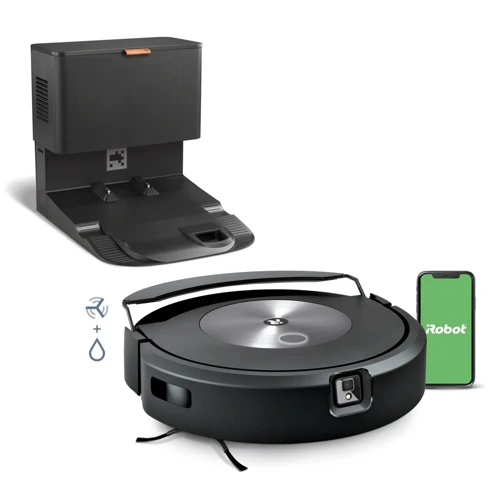
When it comes to choosing the right suction power level for your smart vacuum cleaner, many factors need to be considered. It can be perplexing to determine the right suction power level for your home, flooring type, and cleaning needs. Having a powerful suction, while important, is not always necessary. There are several key factors you should consider before making your decision. By taking the time to do your research and consider your options, you can ensure that you choose the best suction power level for your smart vacuum cleaner that will effectively clean your home and last for years to come.
Consider Your Cleaning Needs
When choosing the right suction power for your smart vacuum cleaner, it’s important to consider your cleaning needs to ensure that your device is up to the task. To help you evaluate your cleaning requirements, here’s a breakdown of what you need to know:
| Cleaning Needs | Suction Power Recommendation |
|---|---|
| Light Cleaning | 500-1000 Pa |
| Regular Cleaning | 1000-1500 Pa |
| Heavy Cleaning | 1500-2000 Pa+ |
If you only need to do light cleaning, such as picking up surface debris or keeping small rooms tidy, then a suction power range of 500-1000 Pa should suffice.
For regular cleaning, where you want to remove dirt and dust from your carpets and floors, you’ll need a higher suction power range of 1000-1500 Pa.
If you have a large home or frequently entertain guests, and therefore require heavy cleaning, then a suction power of 1500-2000 Pa or higher will be necessary to pick up dirt, debris, and pet hair.
In addition to suction power, it’s important to consider the other features and specifications of your smart vacuum cleaner to determine whether it’s a good fit for your cleaning needs. Factors such as battery life, dustbin capacity, and brushroll design can all impact how effective your device is at cleaning your home. However, by taking the time to assess your cleaning needs and understanding the role that suction power plays, you can ensure that your smart vacuum cleaner is up to the task and able to keep your home clean and tidy.
Size of Your Home
Size of Your Home: When choosing the right suction power for your smart vacuum cleaner, you need to consider the size of your home. The larger the space, the more powerful the suction should be to ensure thorough cleaning.
To give you an idea of the power you need, refer to the table below. It shows the recommended suction power based on the size of your home.
| Home Size (Square Feet) | Recommended Suction Power (CFM) |
|---|---|
| Less than 1,000 | 40-60 |
| 1,000-2,000 | 60-70 |
| 2,000-3,000 | 70-80 |
| 3,000-4,000 | 80-90 |
| More than 4,000 | 90-100+ |
Keep in mind that these are just guidelines, and your specific cleaning needs may vary. If you have pets or allergies, for example, you may want to opt for a higher suction power to ensure all the hair and dander is picked up.
Pro Tip: If you have a multi-level house, consider purchasing multiple smart vacuum cleaners with different suction powers. This way, you can optimize the cleaning power for each level that has different flooring types or square footage.
Types of Flooring
When it comes to smart vacuum cleaners, the type of flooring in your home plays a crucial role in determining the suction power level that you need. Different types of flooring have varying levels of resistance to suction power. Let’s take a closer look:
| Types of Flooring | Suction Power Requirement |
|---|---|
| Hardwood | Low to Medium |
| Tile | Low to Medium |
| Carpet | High |
| Area rugs | Medium to High |
Hardwood and tile floors have a smooth surface, which makes it easier for smart vacuum cleaners to pick up debris. Low to medium suction power levels are usually sufficient for these types of flooring. However, when it comes to carpets, the fibers act as a barrier that makes it harder for suction to pick up dirt and dust. High suction power is required for efficient cleaning of carpets. Area rugs are somewhere in between, with most requiring medium to high suction power levels.
The type of carpet in your home also affects the required suction power. High pile carpets have longer fibers that require more suction to lift dirt and debris, while low pile carpets need less suction power. If your home has a mix of flooring types, it’s usually best to choose a smart vacuum cleaner with adjustable suction power levels, so you can easily switch between settings as needed.
When choosing a smart vacuum cleaner, it’s essential to consider the type of flooring in your home to ensure that you get the right suction power level to effectively clean. By taking this factor into account, you can optimize the cleaning performance of your smart vacuum cleaner and achieve a spotless home with minimal effort.
Pet Owners Beware
If you are a proud pet owner, then you know that pets can bring a lot of joy and love into your home. However, they can also bring along pet hair, dander, and other debris that can be troublesome for your smart vacuum cleaner. Here are some things to keep in mind if you have pets:
- Pet hair can clog your vacuum cleaner: Pet hair is notorious for getting tangled up in brushrolls, hoses, and filters, which can reduce the suction power of your vacuum cleaner. It’s important to choose a vacuum cleaner with a powerful motor and an efficient brushroll to handle pet hair. Additionally, consider emptying the dustbin more frequently to prevent clogs.
- Allergies and pet dander: If you or anyone in your home has allergies to pet dander, then you’ll want to make sure your vacuum cleaner has an efficient filter to capture these allergens. Look for HEPA filters that can capture particles as small as 0.3 microns.
- Multiple pets: If you have more than one pet, then you may need to opt for a vacuum cleaner with a larger dustbin capacity to handle the increased amount of debris. Additionally, choose a vacuum cleaner with a strong suction power to ensure that it can pick up all the debris on the first pass.
- Choosing the right brushroll: Look for a vacuum cleaner with a brushroll designed specifically for pet hair. These brushrolls are typically made of a stiffer bristle material that can effectively pick up pet hair without getting tangled.
- Regular maintenance: Pet owners should perform regular maintenance on their smart vacuum cleaners, including cleaning or replacing filters and clearing out the dustbin and brushroll. This will ensure that your vacuum cleaner is working efficiently and can handle the extra workload brought on by your pets.
By keeping these factors in mind, you can ensure that your smart vacuum cleaner is up to the task of handling pet debris and keeping your home clean and tidy.
Budget Considerations
One important factor to consider when choosing a smart vacuum cleaner with optimal suction power is your budget. Fortunately, there are plenty of options at varying price points that can still provide efficient cleaning. However, it is important to keep in mind that typically, the higher the suction power, the higher the price tag.
To help you make an informed decision, we’ve created a table below that highlights some popular smart vacuum cleaners with their corresponding suction power and price range.
| Smart Vacuum Cleaner | Suction Power | Price Range |
|---|---|---|
| iRobot Roomba i7+ | 1700 Pa | $599 – $999 |
| Shark IQ Robot Vacuum | 1700 Pa | $349 – $449 |
| Eufy RoboVac 30C MAX | 2000 Pa | $299 – $319 |
| Ecovacs Deebot N79S | 1000 Pa | $179 – $249 |
Of course, there may be other factors that come into play when choosing a smart vacuum cleaner within your budget, such as additional features or brand reputation. It’s important to weigh all options and choose the best fit for your cleaning needs and financial situation.
Remember, investing in a reliable and efficient smart vacuum cleaner with optimal suction power can ultimately save you time and effort in the long run.
Optimizing Your Smart Vacuum Cleaner’s Suction Power
You might think that buying a smart vacuum cleaner with powerful suction is enough to keep your floors spick-and-span, but as with any appliance, regular maintenance is essential to keep it performing at its best. Without proper care, your vacuum’s suction power can decrease, leading to sub-optimal cleaning results. That’s why it’s important to optimize your smart vacuum cleaner’s suction power with simple steps that can drastically improve its performance. Let’s explore some key strategies for keeping your vacuum cleaner in top shape.
Empty the Dustbin Regularly
One important way to optimize your smart vacuum cleaner’s suction power is to regularly empty the dustbin. The dustbin is the part of the vacuum cleaner that collects the dirt and debris picked up during the cleaning process. When the dustbin becomes full, it can impede the suction power of the vacuum cleaner, making it less effective.
Here are some tips for emptying the dustbin:
- Check the user manual for instructions on how to access the dustbin.
- Depending on the model, you may need to press a button or release a latch to open the dustbin.
- Remove the dustbin from the vacuum cleaner and take it to a garbage can or other waste disposal area.
- Empty the contents of the dustbin into the waste container.
- Use a clean, damp cloth to wipe out the inside of the dustbin.
- Once the dustbin is clean and dry, reattach it to the vacuum cleaner according to the manufacturer’s instructions.
It’s important to empty the dustbin regularly to maintain the suction power of your vacuum cleaner. Depending on how frequently you use your vacuum cleaner and how much dirt and debris you pick up, you may need to empty the dustbin after every use or every few uses.
If you don’t empty the dustbin regularly, you may notice that your vacuum cleaner is not picking up as much dirt and debris as it used to. Additionally, a full dustbin can put extra strain on the motor of the vacuum cleaner, which can decrease its overall lifespan. So, be sure to make emptying the dustbin a regular part of your vacuum cleaning routine.
Clean or Replace Filters
One of the most important aspects of maintaining strong suction power in your smart vacuum cleaner is to regularly clean or replace its filters. Filters play a crucial role in trapping dust, dirt, and other debris that can clog your machine’s airflow and reduce its suction power over time.
Types of Filters
Smart vacuums typically come equipped with one or two types of filters: pre-motor and post-motor. Pre-motor filters capture larger particles before they reach the motor, while post-motor filters capture smaller particles that may have passed through the motor. Some models also have a HEPA filter, which is designed to capture allergens and other tiny particles.
When to Clean/Replace Your Filters
The frequency of cleaning or replacing your vacuum’s filters will depend on several factors, including the model of your vacuum cleaner, the level of usage, and the environment in which you operate your machine. As a general rule, though, you should clean or replace your filters at least once every six months, or more often if you have pets, allergies, or a particularly dusty environment.
Cleaning Your Filters
To clean your vacuum’s filters, consult the user manual for specific instructions, as cleaning methods vary by model. However, in most cases, you can simply remove the filters and rinse them thoroughly with water until the water runs clear. Allow the filters to air dry completely before returning them to the vacuum.
Replacing Your Filters
If your vacuum’s filters are damaged, worn out, or cannot be cleaned, it’s time to replace them. You can purchase replacement filters directly from the manufacturer or from a third-party retailer. Make sure to select the correct filter type for your vacuum model.
Benefits of Clean/Replacement Filters
Keeping your vacuum’s filters clean and/or replacing them when necessary offers several benefits. In addition to maintaining strong suction power, clean filters also improve indoor air quality by capturing allergens and other particles. They also help extend the life of your vacuum cleaner by preventing clogs and other motor damage.
Clear the Brushroll and Other Parts
Maintaining the brushroll and other parts of your smart vacuum cleaner is crucial for optimized suction power. Over time, dirt and hair can get tangled up in the brushroll and cause it to work less efficiently. To ensure that your vacuum cleaner is working effectively, make sure to regularly clear out the brushroll and other parts. Here are some steps to follow:
- Step 1: Turn off your vacuum cleaner and unplug it from the power source.
- Step 2: Locate the brushroll and remove any hair, dust or debris wrapped around it. You can use a pair of scissors or a brush to carefully remove the tangles.
- Step 3: Remove the dustbin and empty it to avoid clogging.
- Step 4: Check the hose and wand for any blockages or dirt accumulation. Clean them using a soft-bristled brush or cloth.
- Step 5: Wipe down the exterior of your vacuum cleaner with a damp cloth or rag.
- Step 6: For a more thorough cleaning, you can disassemble some parts of your vacuum cleaner (such as the hose) and clean them individually. Make sure to follow the manufacturer’s instructions for disassembly and reassembly.
By following these simple steps, you can ensure that your smart vacuum cleaner is working to its full potential. A clean brushroll and other parts, free from obstructions and tangles, can improve suction power and ensure that your floors are spotless.
Use High-Quality Replacement Parts
Using high-quality replacement parts is essential to keep your smart vacuum cleaner functioning at its best. Low-quality parts may not fit properly or may wear out quickly, reducing the effectiveness of your vacuum’s suction power. Here are some tips to make sure you are using the right replacement parts:
- Stick to the Brand: Your smart vacuum cleaner is designed with specific parts that work best for its suction power. Stick to the brand’s replacement parts to ensure compatibility and maximum performance.
- Check for Compatibility: Some replacement parts may have different specifications, such as filter size or brushroll shape. Check your vacuum cleaner’s manual or the brand’s website to ensure the replacement part you are purchasing is compatible.
- Consider Quality: While it may be tempting to go for the cheapest option, investing in high-quality replacement parts can save you money in the long run. Cheap parts may wear out quickly or not fit properly, leading to reduced suction power or even damage to your vacuum.
- Replace Parts on Schedule: Some replacement parts, such as filters, need to be replaced on a regular schedule to maintain suction power. Follow your vacuum cleaner’s manual for recommended replacement intervals.
By following these tips and using high-quality replacement parts, you can ensure that your smart vacuum cleaner has the suction power it needs to keep your home clean and tidy.
Conclusion
In conclusion, understanding suction power is crucial for anyone looking to purchase a smart vacuum cleaner. It is important to know what suction power is, how it is measured, and why it matters.
Having an understanding of the factors that affect suction power such as filter efficiency, dustbin capacity, brushroll design, motor strength, and hose and wand is also critical. This knowledge will help you choose the right suction power level for your needs.
When choosing the right suction power level, consider your cleaning needs, the size of your home, types of flooring, if you are a pet owner, and budget considerations. It’s important to find the right balance between suction power and other features you desire in a smart vacuum cleaner while staying within your budget.
Finally, optimizing your smart vacuum cleaner’s suction power will ensure it operates at peak efficiency. Regularly empty the dustbin, clean or replace filters, clear the brushroll and other parts, and use high-quality replacement parts.
For those who want to keep their homes clean without the hassle of traditional cleaning methods, a smart vacuum cleaner is an excellent investment. Understanding suction power and its importance is essential to make the best purchasing decision and get the most out of your smart vacuum cleaner.
Frequently Asked Questions
Can suction power vary between different vacuum cleaners?
Yes, suction power can vary between different vacuum cleaner models and brands depending on various factors such as motor strength, hose and wand design, brushroll design, and filter efficiency.
Why does a smart vacuum cleaner need high suction power?
A smart vacuum cleaner needs high suction power to effectively pick up and remove dirt, dust, and debris from floors and surfaces. The stronger the suction power, the more effective the cleaning process will be.
What is the ideal suction power level for carpets?
The ideal suction power level for carpets depends on the thickness and density of the carpet. Generally, a suction power level of 250-300 AW (air watts) is suitable for low-pile carpets, while a suction power level of 350-450 AW is recommended for high-pile carpets.
How often should the dustbin be emptied?
The dustbin should be emptied after every cleaning session or when it is at least 75% full, whichever comes first. Keeping the dustbin empty will help optimize suction power and maintain the performance of your smart vacuum cleaner.
How often should filters be cleaned or replaced?
It is recommended to clean or replace the filters of your smart vacuum cleaner at least once a month, or more frequently if you have pets or allergies. This helps maintain filter efficiency and ensure strong suction power.
What type of filter is best for a smart vacuum cleaner?
A HEPA (High-Efficiency Particulate Air) filter is the best option for a smart vacuum cleaner as it can effectively capture small particles such as pet dander, dust mites, and pollen, which are common allergens.
How can I optimize the suction power of my smart vacuum cleaner?
You can optimize the suction power of your smart vacuum cleaner by regularly emptying the dustbin, cleaning or replacing filters, clearing the brushroll and other parts of debris, and using high-quality replacement parts.
Can a smart vacuum cleaner adjust its suction power automatically?
Yes, many smart vacuum cleaners can adjust their suction power automatically based on the type of surface they are cleaning, such as carpets, hardwood floors, or tile. This ensures optimal suction power and cleaning performance.
How can I choose the right suction power level for my smart vacuum cleaner?
You can choose the right suction power level for your smart vacuum cleaner by considering your cleaning needs, the size of your home, the types of flooring you have, whether you have pets, and your budget.
What are the benefits of using a smart vacuum cleaner with high suction power?
The benefits of using a smart vacuum cleaner with high suction power include more effective and efficient cleaning, better removal of dirt, dust, and debris, improved air quality, and a cleaner home environment.

